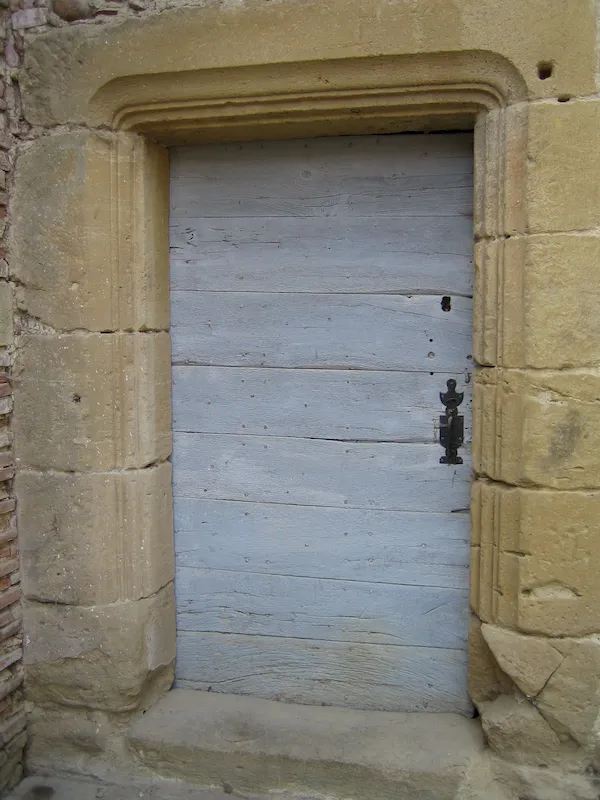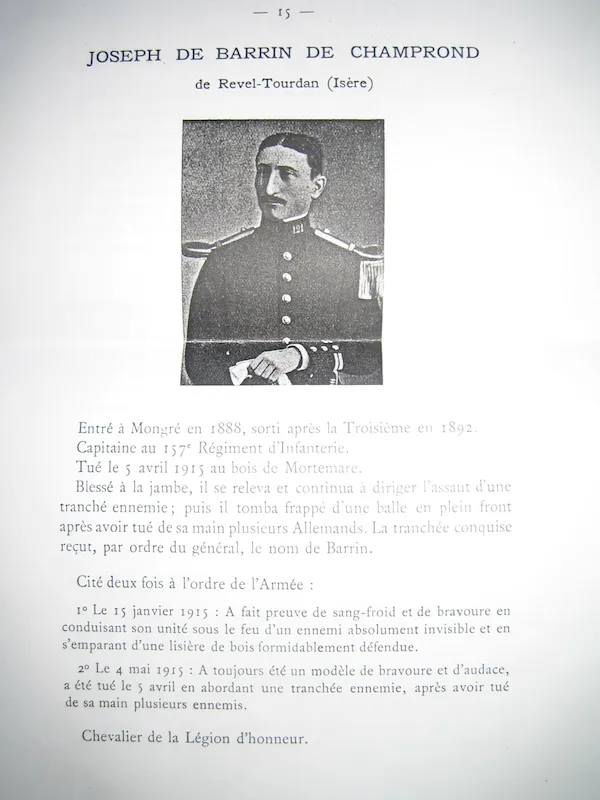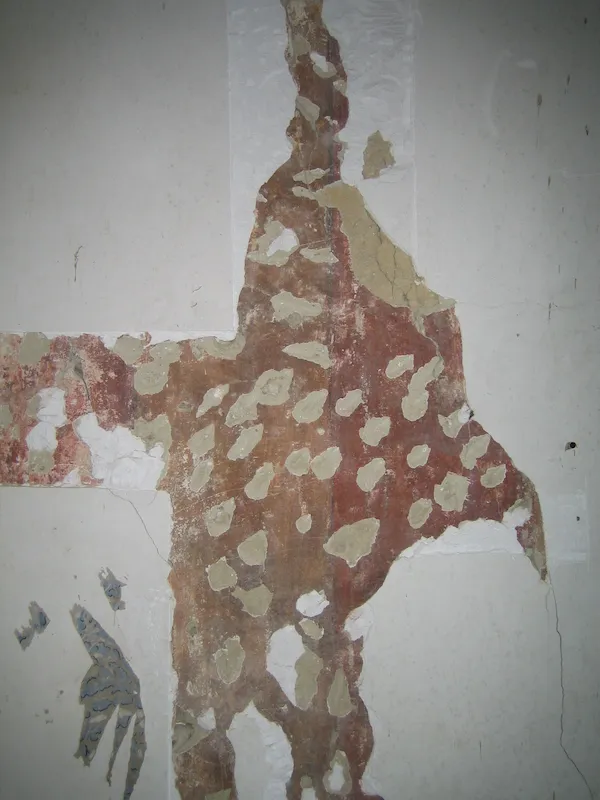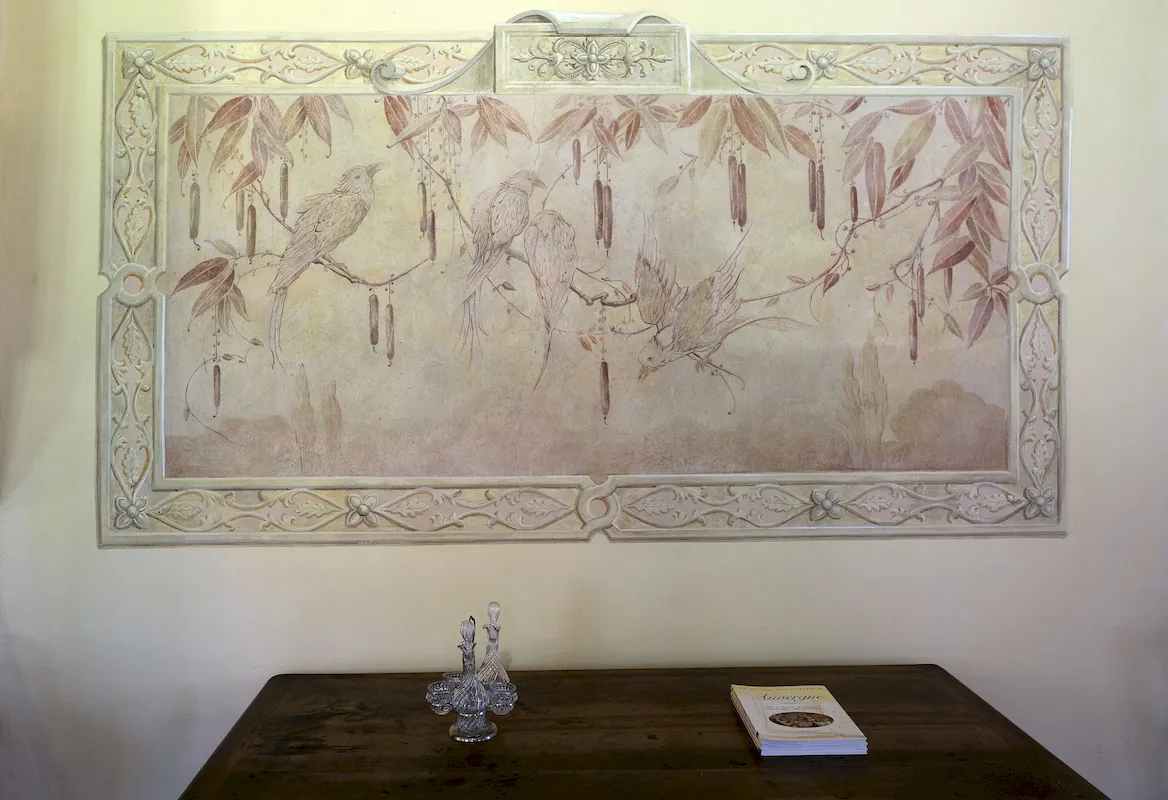The Château de Barbarin through the centuries
12th century: Bonnevaux Abbey
In 1185, the Cistercian monks of the Abbey of Bonnevaux who operated the barn of La Perrière de Primarette occupied the place. (cartulary by N.D de Bonnevaux) "… .in nemore de Barbarino…""
14th century: Revel - Barbarin
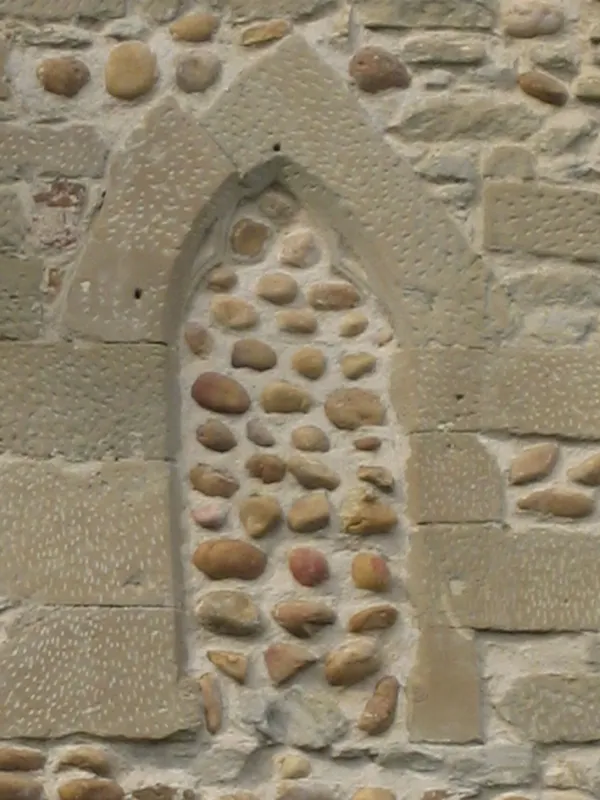 The first stones of the current building were laid at the beginning of the 14th century. It was François de Revel and his son Reynaud who began to erect this stronghold (ADI 8 B 292 f ° 263-274v °). The fief of Barbarin was conceded to this younger branch which settled near the castle of its elder, completing a military line dominating the plain of Bièvre Valloire. Jehan de Barbarin de Revel is the oldest known lord bearing the name of Barbarin.
The first stones of the current building were laid at the beginning of the 14th century. It was François de Revel and his son Reynaud who began to erect this stronghold (ADI 8 B 292 f ° 263-274v °). The fief of Barbarin was conceded to this younger branch which settled near the castle of its elder, completing a military line dominating the plain of Bièvre Valloire. Jehan de Barbarin de Revel is the oldest known lord bearing the name of Barbarin.
15th century: Roussillon - Saussac
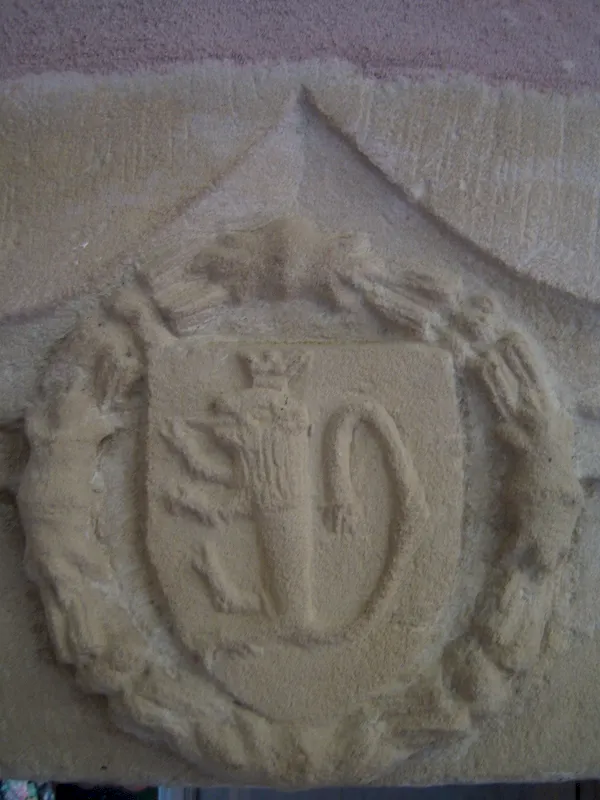 1441: the stronghold belongs to Marie de Roussillon and her husband Josserand de Saussac (ADI B41 38-ADI B4138) first Baron du Velay. They enlarged the fortified house by adding a wing and large outbuildings forming a high courtyard and a lower courtyard. It was Marie de Roussillon who sponsored the two large painted rooms. The deed of sale of the parish of Monsteroux by the lord of Milieu was signed in the upper room, later this commune will be called Monsteroux-Milieu. In the current dining room, we can see a door lintel bearing the arms of this family, which is the only known representation.
1441: the stronghold belongs to Marie de Roussillon and her husband Josserand de Saussac (ADI B41 38-ADI B4138) first Baron du Velay. They enlarged the fortified house by adding a wing and large outbuildings forming a high courtyard and a lower courtyard. It was Marie de Roussillon who sponsored the two large painted rooms. The deed of sale of the parish of Monsteroux by the lord of Milieu was signed in the upper room, later this commune will be called Monsteroux-Milieu. In the current dining room, we can see a door lintel bearing the arms of this family, which is the only known representation.
16th century: Saussac - Émé de Saint Jullien
July 25, 1565: Jean-François de Saussac, Lord of Barbarin acquires the seigneury of Revel (the castle and its land) (ADI 1 G 24)
Richard Melchior de Saussac, sold Barbarin on June 16, 1586 at the price of 12,000 ecus (ADI 3 E 1140) to Octavien Émé de Saint Jullien (1551-1624) King's Advisor, President of the Dauphiné Parliament. These possessions mark the influence of this illustrious family in the lower Dauphiné. We owe him the round tower of the castle.
17th century: Émé de Saint Jullien de Marcieu
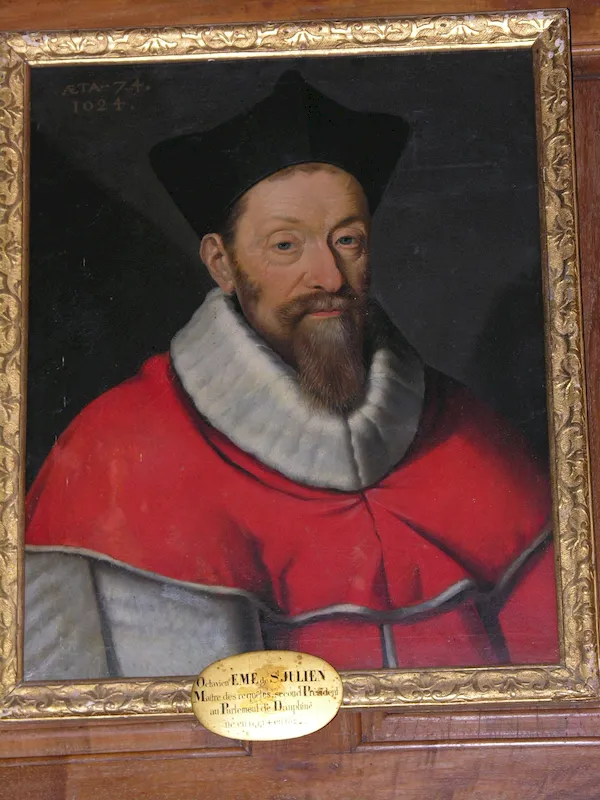 The Lord of Barbarin is Ennemond Émé de Saint Jullien, Baron de Marcieu (1605-1670). An inventory of January 21, 1640: "... Movable property, buildings, cattle, seeds and other things depending on the stronghold of Barbarin and the areas depending given to Louis Trouillet farmer of goods by Messire Ennemond Émé de Saint Jullien seigneur de Marcieu and the said goods of the stronghold of Barbarin for the annual price of 1500 pounds 4 pigs, 30 capons… "(ADI E 1140).
The Lord of Barbarin is Ennemond Émé de Saint Jullien, Baron de Marcieu (1605-1670). An inventory of January 21, 1640: "... Movable property, buildings, cattle, seeds and other things depending on the stronghold of Barbarin and the areas depending given to Louis Trouillet farmer of goods by Messire Ennemond Émé de Saint Jullien seigneur de Marcieu and the said goods of the stronghold of Barbarin for the annual price of 1500 pounds 4 pigs, 30 capons… "(ADI E 1140).
Virginie de Monteynard undertook work: "price made for repairs to the Château de Barbarin by Dame Virginie Guiffrey de Monteynard wife of Messire Ennemond Émé de Marcieu to Antoine Gautier carpenter in Beaurepaire for the price of 39 pounds of February 12, 1640" (ADI 3 E 1140).
18th century: Émé de Saint Jullien de Marcieu - Lamaletie
Laurent Joseph 2nd Marquis de Marcieu 1676-1742 is Lord of Barbarin, he married Gabrielle de Mistral de Montmirail 1698-1770. The fortified house has become a pleasure residence: its southern facade pierced with 23 windows overlooks a courtyard with the stables entering to the east. Under this terraced courtyard the gardens of the castle. The construction of the large barn (700 m2) lasted several years as shown by the keystones of the South East and South West doors which are dated 1728 and 1732. There remains the press and saddlery of this large ruined building.
In 1745, it was Gabrielle de Mistral, Marquise de Marcieu, widow of Laurent-Joseph who sold Barbarin "... for the sum of 50,000 pounds ..." after 159 years of possession.
"... in Grenoble was present high and powerful lady Françoise Gabrielle de Mistral, Marquise de Montmirail, Baroness of Crépol and Chandieu, of Monteynard ... widow of the Lord of Touvet and of Barbarin ... who sells to Messire Pierre Hilaire de Lamalétie, Chevalier, Treasurer General of France in the generality of this province of Dauphiné the castle, stronghold and stronghold of Barbarin located in Pisieu mandement de Revel election of Vienne honorary rights and others depending…. " July 10, 1745 (ADI 3 E 1140)
Quality of the fiefdom of Barbarin
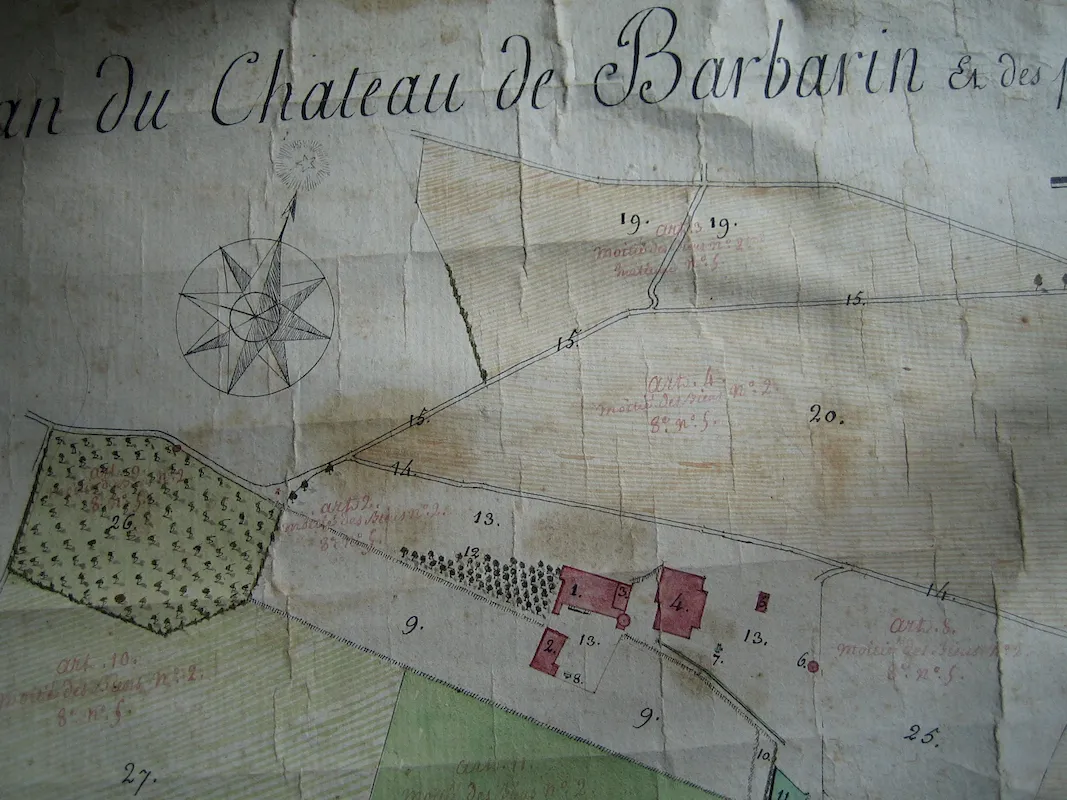 "This fief is absolutely independent of the seigneury of Revel, it only comes under the High Domain of the Crown, so that the lord possessing this fief has the most useful seigneurial and direct property that it is possible to reunite. Revel. on the contrary, it is only a rear fiefdom of the archbishops of Vienne and has no honor to be of the immediate influence of his Majesty, it is in this inferior to the fief of Barbarin to whom even the Lord of Revel owes censives…" Extract from a trial whose deliberation took place in Paris on June 22, 1767
"This fief is absolutely independent of the seigneury of Revel, it only comes under the High Domain of the Crown, so that the lord possessing this fief has the most useful seigneurial and direct property that it is possible to reunite. Revel. on the contrary, it is only a rear fiefdom of the archbishops of Vienne and has no honor to be of the immediate influence of his Majesty, it is in this inferior to the fief of Barbarin to whom even the Lord of Revel owes censives…" Extract from a trial whose deliberation took place in Paris on June 22, 1767
There is no mention of looting during the Revolution. August 1, 1789: letter from the municipality of Beaurepaire to that of Moras: "Gentlemen, Revel at the moment is asking for help for them and for Barbarin, we are going to join us in Barbarin ..." (archives of the municipality of Beaurepaire).
Pierre Hilaire de Lamaletie will later deposit the entire Barbarin burrow in the municipality of Beaurepaire. It is the heirs of his wife who will sell Barbarin. A detailed inventory is carried out describing the castle and the furniture.
19th century: Lamaletie - Luzy de Pélissac - Barrin de Champrond
In the dining room with plasterwork: "Art 161: a dozen soup plates, four dozen plates, eight Strasbourg earthenware fruit bowls, four window curtains in blue Indian ...". In this inventory, there are 108 plates and around thirty shaped pieces. This room today is located in the same place with its plasterwork decorations. The rest of the inventory describes the contents of the rooms as the notary advances in the castle, we find the same plan today.
The estate was acquired by François Aimé de Luzy, Marquis de Pélissac (1796-1851). He only had daughters. Important landowner, soldier, Bodyguard of King Louis XVIII (Luzy Château de Bresson archives), then mayor of Revel. He built the stables at the rear of the castle as well as the farm which adjoins the barn to the east.
1874: Baron Léon Emilien de Barrin de Champrond (1829–1902) and his wife live in Barbarin and manage several hundred hectares and numerous farms. A local text tells us that "… Monsieur Léon de Barrin is buried with his horse in front of Barbarin…" (private archives Barrin de Champrond family).
20th - 21st centuries: Barrin de Champrond - Effantin - Seigle
Upon her death (May 17, 1923) Baroness Jacqueline de Barrin born to Mauléon Narbonne bequeathed Barbarin and his estate to Joseph de Barrin (1915-1998) who sold the castle and only this one in 1984 to Christophe Effantin. The castle is thus isolated from its domain, this whole had remained coherent and united since the XIVth century.
On May 29, 1993, the château was sold to Philippe Seigle.
On June 6, 2003 the whole was again made coherent by the acquisition of the farm, the barn, the outbuildings adjoining the castle and part of the land.


